The Essential Items for Potty Training
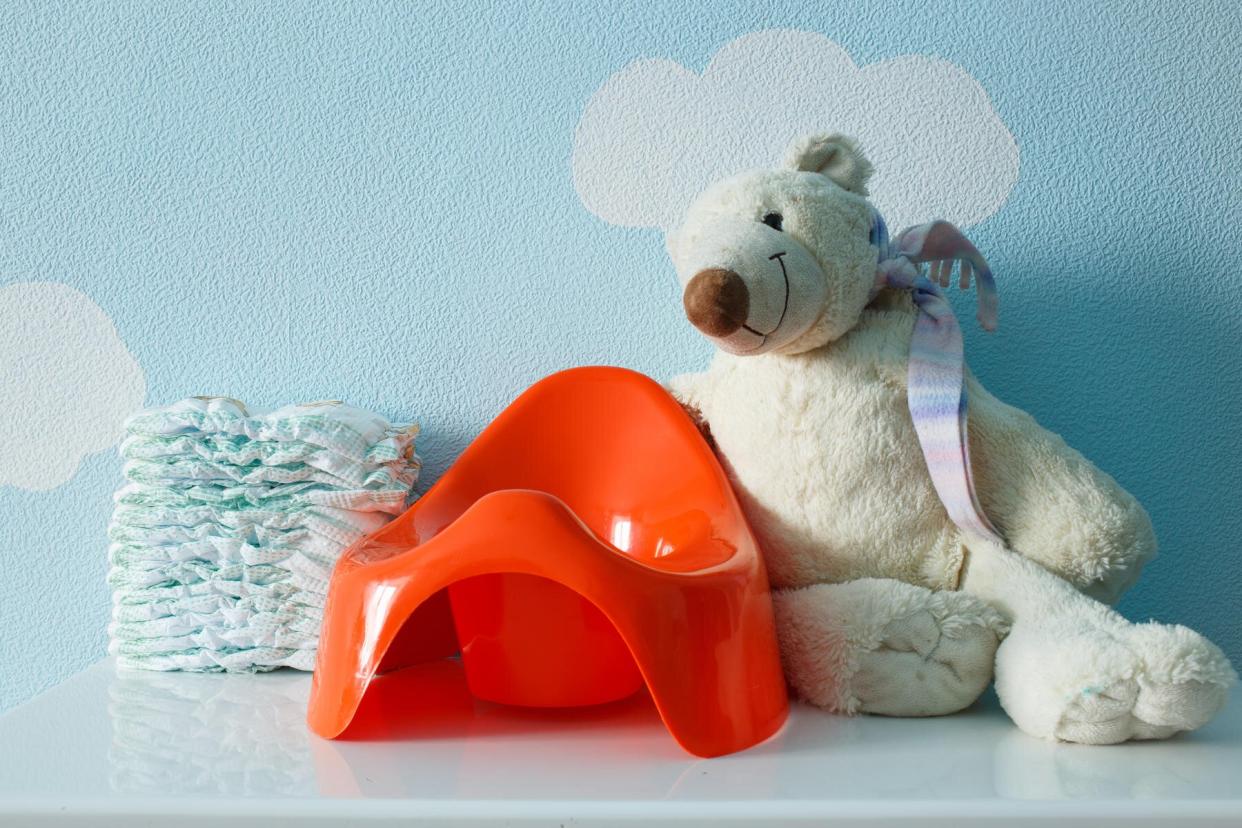
Avtk/Shutterstock
Potty training is a major developmental milestone, one which cannot and should not be taken lightly. "The key to success is patience," says David Hill, M.D., a pediatrician in Wilmington, North Carolina and author of Dad to Dad: Parenting Like a Pro. It also takes fortitude, humility, perseverance, and composure. No two children are the same. Every potty training experience is different.
But while potty training requires poise—and self-restraint—it isn't just white knuckles and luck. With a few tips, tricks, and (yes) potty training must-haves, your wee one potty train like a pro. Below are our favorite potty training essentials.
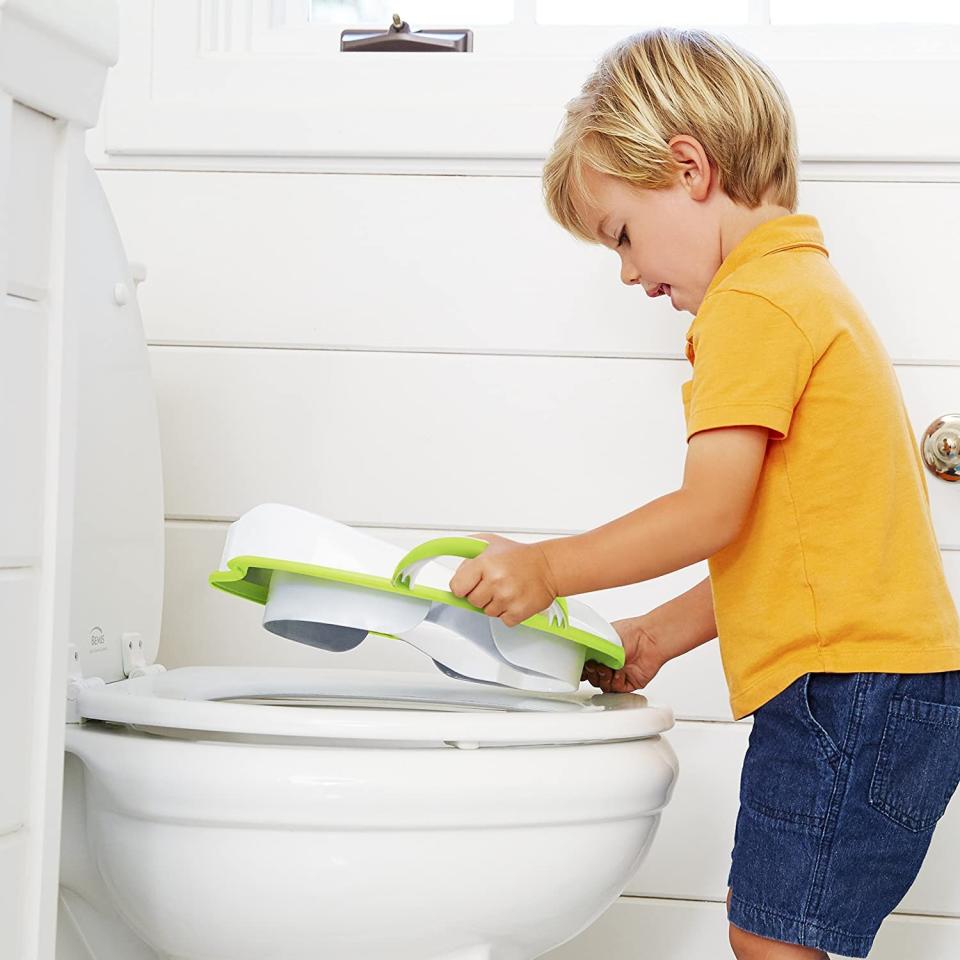
Courtesy of Amazon Courtesy of Amazon
Potty Training Must-Haves for the Bathroom
"One of the secrets to potty training success is making sure you have all the essential equipment and supplies before you begin," advises "Potty Pro" Teri Crane, author of Potty Train Your Child in Just One Day. Start with these necessities to prepare for and build your child's interest in potty training.
Potty chair
Stand-alone potties are the perfect size for little learners and are available in a variety of colors and familiar cartoon characters. A kid-size potty will be easier for your tot to use and less intimidating than a traditional toilet, and it can be moved around the house if needed.
Seat reducer
Smaller and less expensive than a potty chair, a seat reducer (or potty seat) sits on top of a traditional toilet seat and reduces it to a child-friendly size. Most have colorful designs and a padded cushion for added comfort. Using a seat reducer for potty training will occupy one of your toilets, a potential problem if you want to leave it there and you're a one-toilet household, but most seat reducers have handles for easy removal and storage.
Stool
A small plastic or wooden stool will help your child get up onto a seat reducer and sit on the toilet. It will also give your child a sense of safety and stability, and can help get them in the right position for using the bathroom. A stool is also handy for boosting kids up to the sink and faucet level to wash their hands. Some potty chairs convert into or can be used as a stool to cut down on clutter in the bathroom.
RELATED: How to Choose the Perfect Potty
Flushable wipes
Toilet paper is already standard in your loo, but flushable wipes, which are similar to baby wipes but disintegrate more easily and are safer for plumbing, are clutch. These wet wipes are softer than toilet tissue and more familiar to your child. They make cleanup faster. Just a few wipes and you're good to go. They also help prevent hygiene issues, which can occur when your little one is learning. A win-win all-around.
Kid-friendly hand soap
Speaking of hygiene, a major part of potty training involves learning potty training best practices, like how to wipe and wash your hands, so choose—or have your child help pick out—a hand soap that will encourage post-potty hand washing. Instead of regular bar or liquid soap, consider stocking up on foaming soap. "Toddlers love the bubbles, and there are easy, inexpensive recipes online to make your own once you have the pump dispenser," says Heather Wittenberg, Psy.D, a Parents advisor and author of Let's Get This Potty Started! The BabyShrink's Guide to Potty Training.
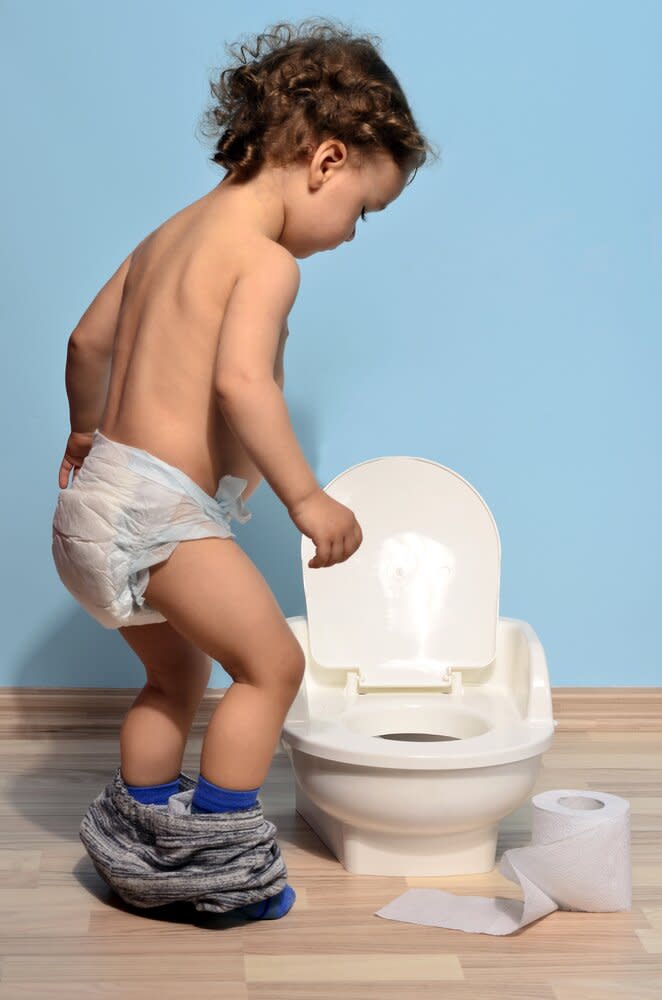
Shutterstock
Potty Training Must-Haves for Your Child
Choosing a potty is certainly important, but so is outfitting your little potty trainer. From motivational undies to easily removable pants, here are the items you need for your potty training tot.
Underwear
Cool potty training pants and big-kid underwear can be a key motivator in helping your child move beyond diapers. After all, being excited is a key component to successful potty training. Consider taking your potty trainer to the store with you to pick out their first pack featuring different colors, patterns, characters, and themes.
Easy-to-remove clothing
During those first few days, weeks, and months of potty training, ditch the rompers, overalls, and button-up pants for bottoms with elastic waists. Avoid pants with drawstrings or zippers because they will need to be untied and unzipped. Your child will still be learning the sensation of needing to go, so you don't want to waste any time with tricky clothes; you'll want to be able to get the pants off in the shortest time possible, by either you or your child. The goal is to train your child to be self-sufficient enough to take off their pants to use the bathroom, so choose a style that will be simple enough for her to manage.
Training underpants
Potty training pants come in both disposable and reusable/washable styles and are designed to let your child feel wetness (unlike a diaper). This way, they knows when they've gone potty but the wetness is contained so it doesn't soak through clothes. For some families, training pants are a necessary middle step in the potty training process; for others, they can be a crutch that prolongs the transition from diapers to underwear.
Progress chart
Using the potty is a whole new habit for your child, and it can help if they can see, record, and be reminded of their progress. There are plenty of attractive potty training charts you can buy on Etsy.com or print for free on Pinterest, but a simple hand-drawn grid decorated by your child will work. The goal is to help them—and you—note all the successes being made.
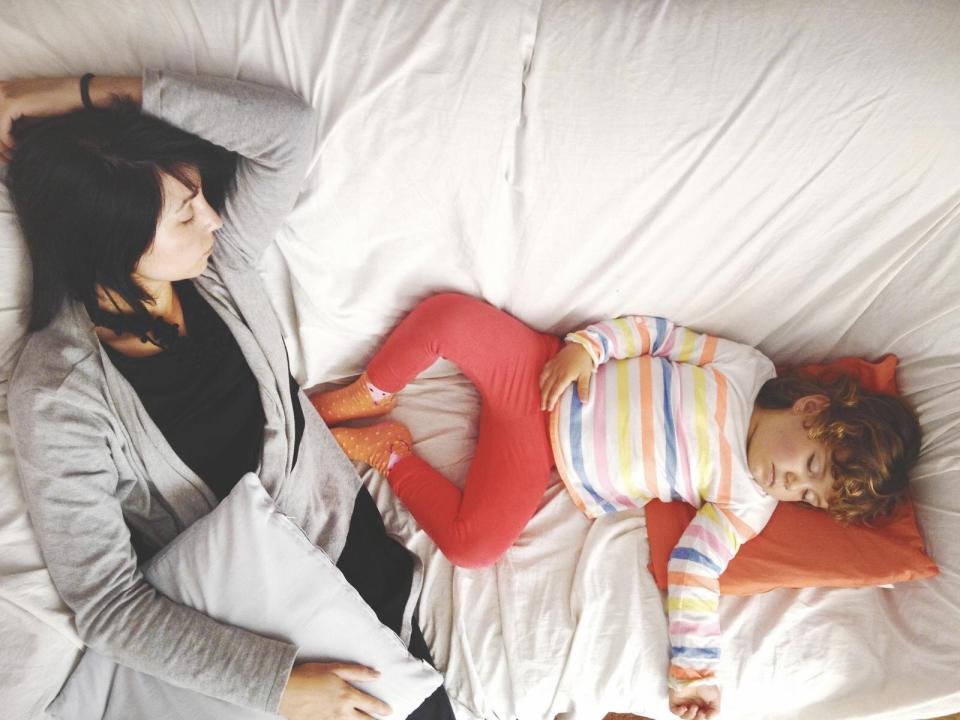
Albert Mollon/Getty Images
Potty Training Must-Haves for Bedtime
"Nighttime potty training is a completely different animal than daytime training," Dr. Wittenberg says. "You might get 100 percent day training and zero percent night training—for years. This has everything to do with anatomy and very little to do with parenting (or your child's efforts). It's physical and developmental." Here's what you'll need to make it through those long (and likely wet) nights.
Nighttime potty training underpants
Regular training pants are often not absorbent enough to handle an 8- to-10-hour overnight stretch. Nighttime training underpants are more absorbent than their daytime counterparts and are available in both disposable and reusable/washable styles. They're a useful transition item as your child works on mastering daytime potty training because they can substitute for diapers.
Protective mattress cover
Sheets can be washed and accidents taken care of, but a soiled mattress is no easy cleanup task. Prevent this problem by purchasing a waterproof mattress cover; some are vinyl and some have a soft cotton top and a waterproof bottom layer. Mattress covers can fit securely over the corners like a fitted sheet or wrap around the center of the mattress like a saddle. Consider investing in at least two covers to have on hand for quickly dealing with nighttime accidents.
Extra sheets
Stock up on two to three fitted sheets. Take a tip from experienced parents and make the bed with at least two layers of sheets and waterproof mattress protectors. This way, if there's an accident in the middle of the night, you can simply strip off the soiled sheet and protector top layer and tuck your tot back into bed with the dry bottom layer. Accidents happen, but you'll save yourself from middle-of-the-night bed remaking.
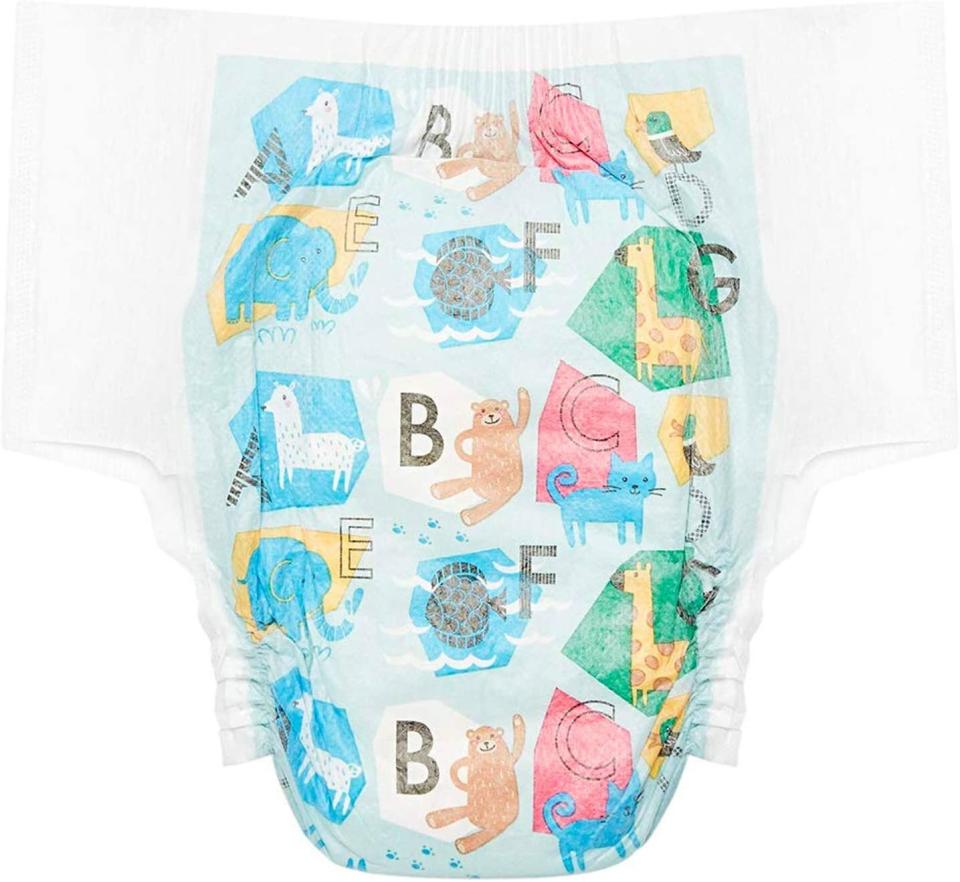
Courtesy of Amazon Courtesy of Amazon
Potty Training Must-Haves for Travel
Are you headed out on a road trip? Is your potty training tyke about to board a cross-country flight? If so, know that preparation is key. These items will help alleviate the stress that comes from traveling with a potty training child.
Foldable potty training seat
Much like seat reducers, foldable seat covers are designed to make any toilet child-sized. The main difference is that they also fold up—a huge benefit, especially since most are designed to fit inside your standard diaper bag. That said, it's important to note that these seats cannot and do not fit all toilet shapes. Elongated bowls, for example, may present a problem. As such, it's important to have a backup plan.
Wet/dry bag
If you're looking for a way to carry potty training underpants—both soiled and dry—or even extra clothes, you may want to invest in a wet dry bag. These catch-alls let you store extras in the dry part and, in case of accident, you can toss the dirty clothes in "wet" the zippered pouch.
RELATED: 8 Potty Training Do's and Don'ts
Extra clothing
While it should go without saying, you should never leave your house without a spare outfit—or two. This is true for babies and potty trainers. Pack an extra shirt, pair of shorts or pants, and (of course) extra underwear and/or a Pull-Up.
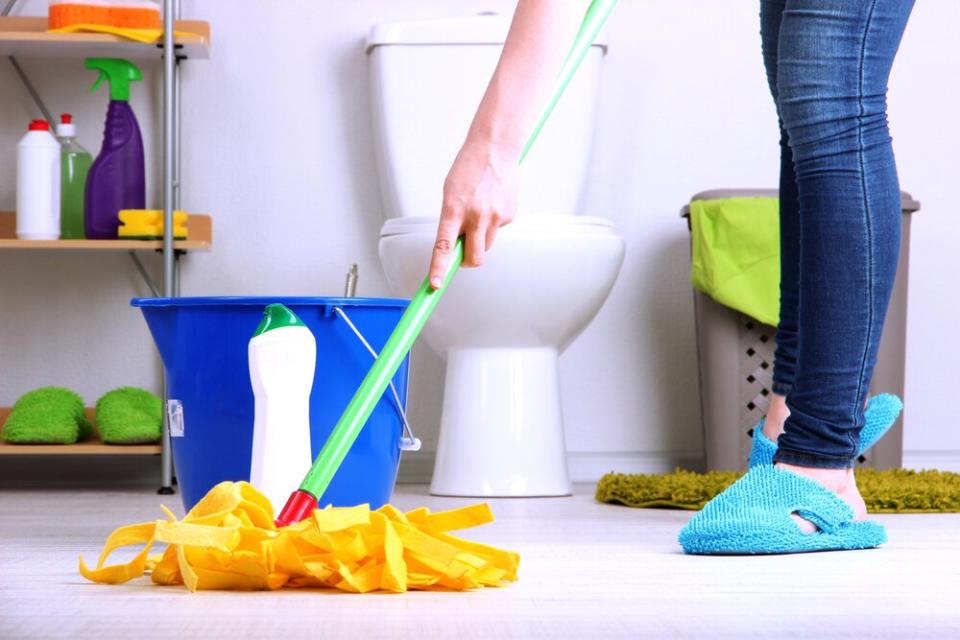
Africa Studio/Shutterstock
Other Essential Items
If you've got the basics down, check off this list of other items.
Cleaning supplies
Prepare for accidents by making sure you have a well-stocked supply of paper towels or rags and disinfecting spray.
Potty training rewards
New habits may be helped along by giving a reward for accomplishments. There's no need to break the bank, though. Start small with stickers, kid-safe candy or all-natural fruit snacks, or another small treat for making potty progress. Brand-new potty trainers may need an incentive with every small victory (we're talking multiple times a day), but once your child has mastered the basics, set long-term goals (five days with no accidents, peeing in the potty 25 times, etc.) to reward with a prize.
Special "potty-only" activities
If your child is having trouble understanding the basic idea of going potty, is afraid of the potty, or is struggling to spend adequate time on the toilet, there is a wide variety of potty training books, movies, and toys to help the process seem more normal and less scary. Set aside one or two books or toys your kid will love.
Potty watch/timer
At the onset of potty training, you'll need to give your child frequent potty breaks, both to provide lots of practice opportunities and to prevent accidents. A potty watch or timer set at 20-minute intervals can deliver easy reminders to go to the toilet.

